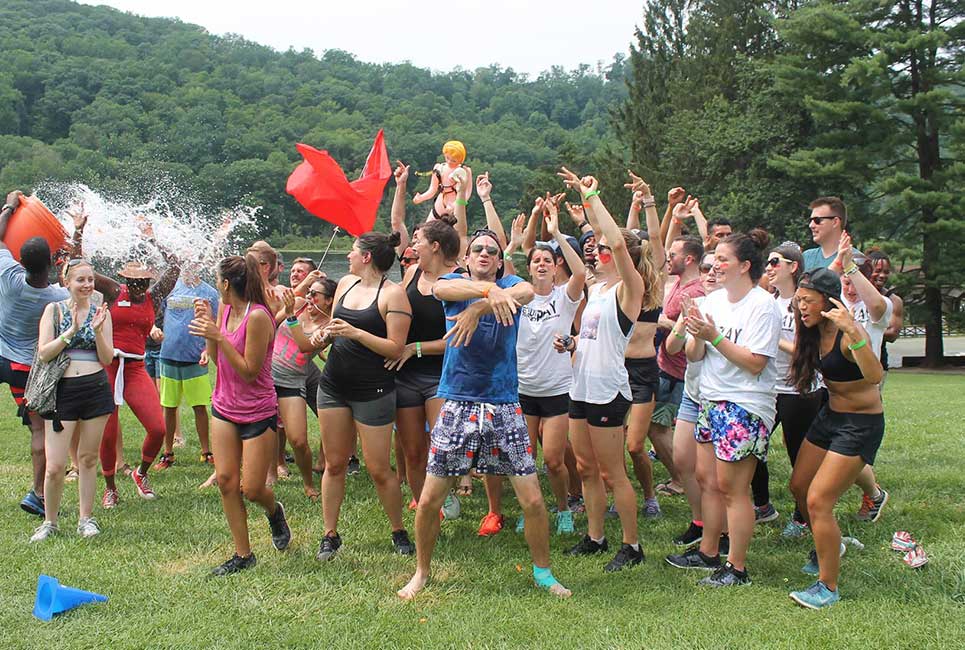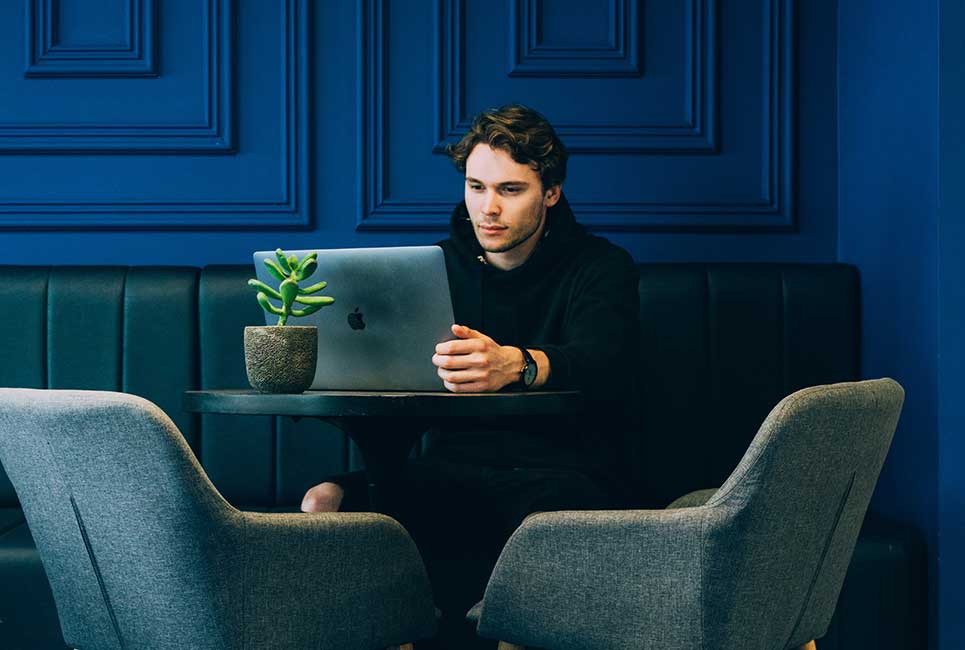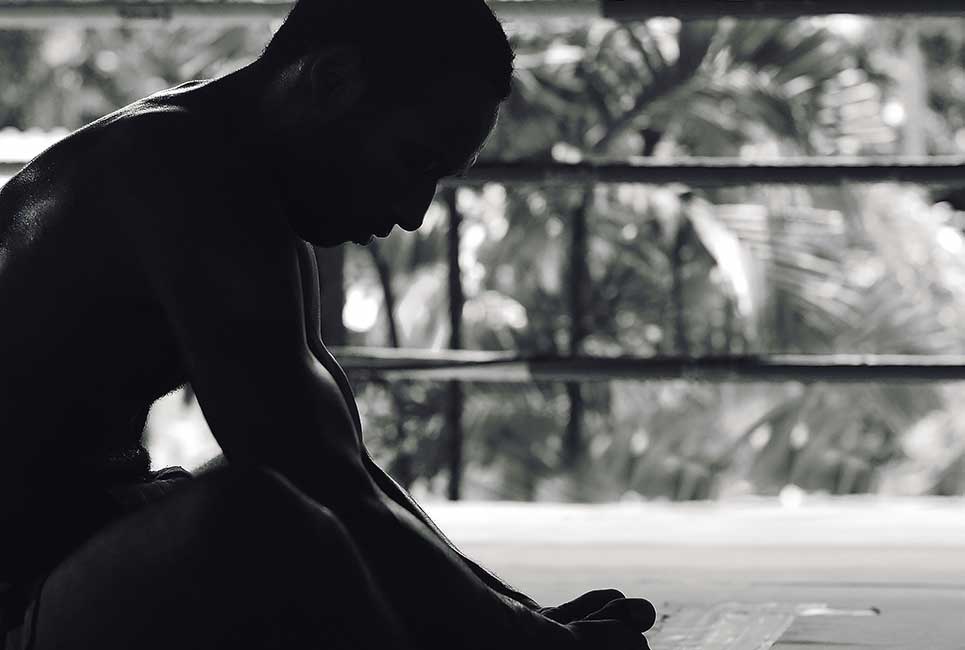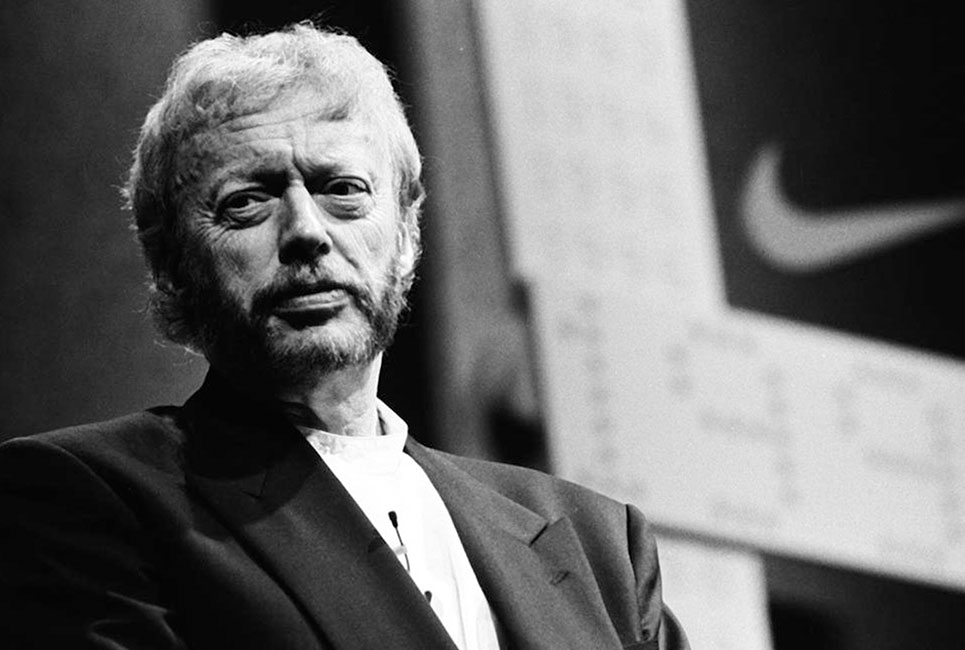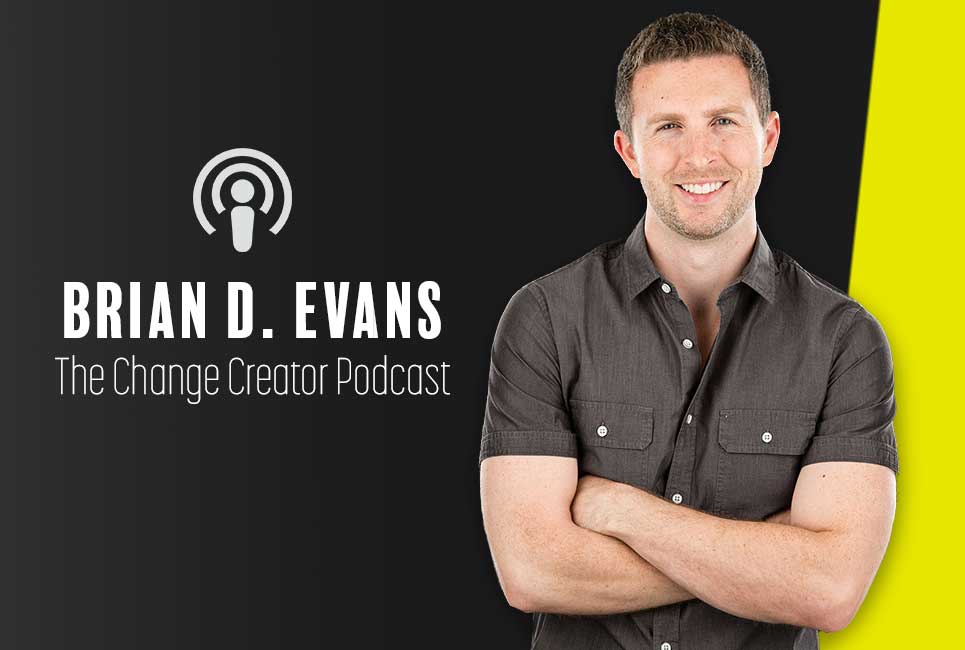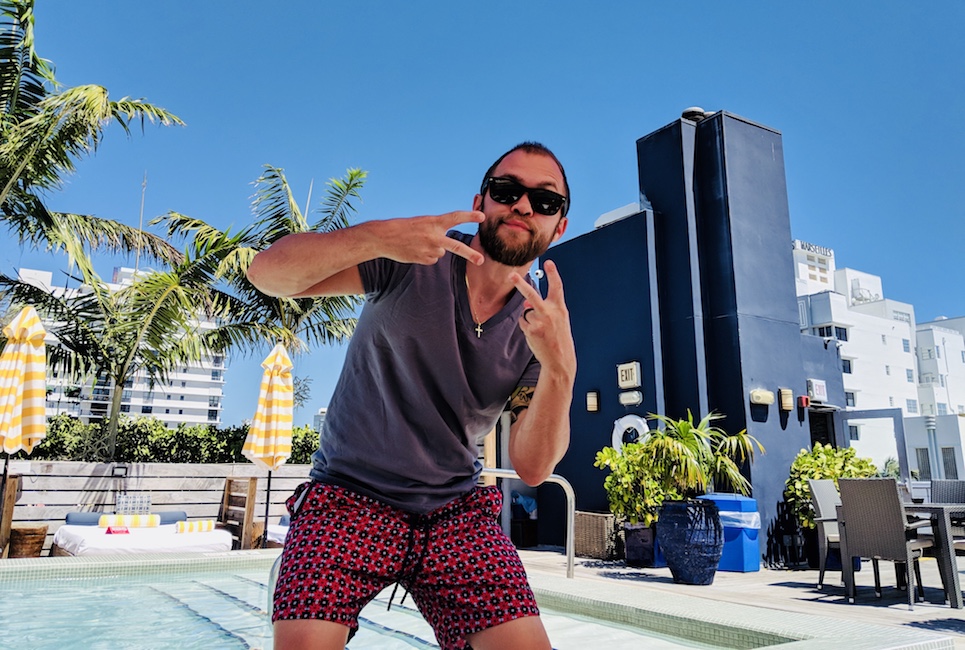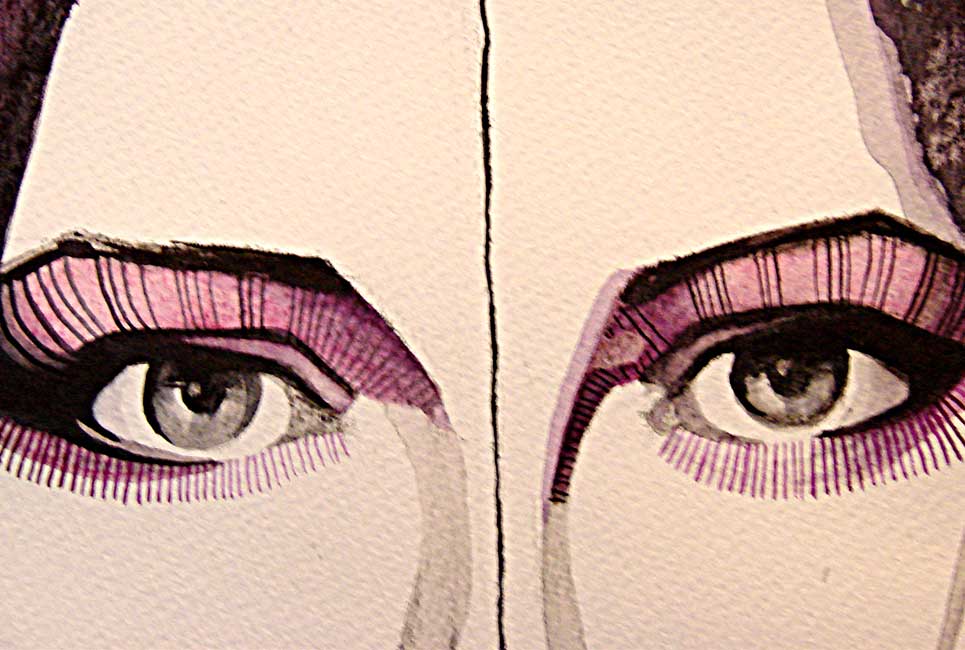I have now spoken to a lot of different entrepreneurs and been around the block in the business world for almost two decades. We are all eager to figure out the magic formula for success or the next great tactic to win. While tactics regularly change, there are deep rooted lessons and shared messages among experts, around success and wealth, that stand the test of time.
Continue readingHow Maggie Doyne Turned Her Compassion Into a Social Enterprise
How did Maggie Doyne go from a teenager with a backpack to building a successful foundation and beacon of hope for the children and women of Kopila Valley? By planting a seed at the source of the problem and growing deep roots within the community.
Continue readingHow to Create a Book and Succeed in Crowdfunding: Tony Loyd (Interview)
In this interview we have Tony Loyd back for round two to discuss how he succeeded in crowdfunding a new radio show and developed a book all at the same time.
Continue reading5 Conferences Every Social Entrepreneur Needs to Attend
We’ve talked to hundreds of successful entrepreneurs and you know what they told us is one of the main keys to their success? Finding a mentor! Having a mentor can be the key to ultimate success, but how do you find that perfect mentor? Get away from your desk and attend a conference! That’s the key!
Any modern day social entrepreneur making their way pursuing their mission needs help along the way.
You’ve probably heard that you should get find a mentor if you want to expedite the process. Duh, right?
That’s something we can probably all agree on.
However, the bigger question that comes up isn’t, “how do I find a mentor?”. The question is, “how do I get someone to agree to be my mentor?”
You want someone who’s very successful and doing what you want to ultimately do. But the thing is, they are obviously busy and as much as they might want to help everyone they just can’t. Time is our most valuable commodity so if you want some of their time, it will take some work.
You can either offer them something in return that is of value – money or support of their business for example. Get creative.
The other thing to do is find a way to meet in person. There is nothing better or more powerful and a face to face discussion where people can see your passion and connect with you face to face.
This is such an important part of the process and many times getting someone to agree to a coffee for 15 minutes is very possible. Again, you might have to get a little creative to get them to become your mentor on a long-term basis, but this is a great way to start. So get out there and mingle! The right mentor is just waiting for you!
Here are our top 5 conferences for the social entrepreneur:
1. SOCAP 17
- When: October 10-13
- Where: San Francisco, CA
- Price: Summer sale, $1,195 (ends September 1)
Want to meet investors for your social enterprise, this is the place to be!
This is essentially the world’s leading conference on social capital markets.
What you will find here is a gathering where powerful ideas are sparked and game changing partnerships get started.
The conference brings together social entrepreneurs, impact investors, funders, business leaders and other innovators and problem solvers from across the world.
Now in its 10th year, SOCAP is a catalyst for much-needed change, creating a vibrant market for ventures that support people, planet, and profits.
2. Agents of Change
- When: September 15, 2017
- Where: Portland, Maine or Virtual
- Price: Packages range from $149 – $549
Social entrepreneurs need to scale impact so this really cool one day conference is on the list. They offer good speakers and it’s affordable! They’ve been doing it every September since 2012.
It’s great for business owners, marketers, and social entrepreneurs who want to reach more of their ideal customers through search, social, and mobile marketing.
Past speakers have included Chris Brogan, Amy Porterfield, Pat Flynn, Sue B. Zimmerman, John Lee Dumas (check out our interview with John), Laura Fitton, Chris Ducker, Mike Stelzner, Jaime Masters, and much, much more.
This year they have a lot of inspiring keynotes from Jay Baer and Rich Brooks along with breakout sessions on Facebook, Pinterest, Instagram, Twitter, content creation and more!
If you’re looking for great insights without the hype that will help you rank higher, engage your audience on social media, and generate more leads and business through your website, then you can’t afford to miss Agents of Change!
3. Opportunity Collaboration
- Where: Ixtapa, Mexico
- When: October 15-20, 2017
- Price: $2,950 for all-inclusive which includes: 5 nights lodging & meals, full agenda, all leadership programs & activities, pre- & post-event networking services, airport transportation, onsite internet access, recreation facilities, and gratuities.
This is a very well thought out and executed event that provides a wonderful opportunity to connect with high-caliber like minded people solving problems in the poverty space.
This meeting annually convenes 400 global leaders building sustainable solutions to poverty offering the opportunity to engage social entrepreneurs, innovative non-profit executives, grant-makers, impact investors, corporate & academic field-leaders, and aligned media working around the world to solve common challenges and spark new opportunities.
Predicated on the powerful idea that out of fragmentation can come collaboration, from diversity can come unity, and from cross-fertilization can come innovation: the power of collaboration does not presume a single outcome. Rather, it draws its power from the conviction that people of good will forge their own solutions, directions, and alliances, and uncover new ways to combine and leverage resources.
4. Skoll World Forum
- When: April 9-13 2018
- Where: Oxford, England
- Price: From $1,250 – $3,300 plus 20% VAT. This was the 2017 pricing and is subject to change for 2018. The attendance fee is determined by the sector in which the delegate works. There is no ‘early bird’ registration.
Click here for specific pricing tiers.
Imagine being a place surrounded by 1,000 of the world’s most influential social entrepreneurs, key thought leaders, and strategic partners.
Well, that’s exactly what you’ll get when you attend this iconic event at the University of Oxford’s Said Business School.
Change Creator Magazine has interviewed and shared incredible cover stories with several of Skoll’s award winning social entrepreneurs such as, Dr. Elizabeth Hausler, Dr. Alasdair Harris, Chuck Slaughter, and coming this November 2017, Taddy Blecher.
Exchange ideas, solutions, and information while building incredible relationships to help accelerate your own success driving impact.
Their mission is to accelerate the impact of the world’s leading social entrepreneurs by uniting them with essential partners in a collaborative pursuit of learning, leverage, and large-scale social change.
If you want to make it out to this event in 2018 you have to apply and can do so right here
5. Survive and Thrive
- When: September 8-10, 2017
- Where: Kent, Connecticut
- Price: $2,999 Get a 15% discount!!!
Related: 5 Powerful Truth From the Survive and Thrive Conference
We recently learned about this unique and exciting mission driven conference when a video from Daymond John and Kevin Harrington caught our attention.
If you’re really looking to find a mentor or build strong relationships, this is really good opportunity to do that.
This event is different than most others.
It’s actually held on a camp ground and rather than having thousands of people attend, they have a limited count of a couple hundred. Why? This is done to offer real impact through intimate coaching and networking with 1 on 1 mentorship, bonding with events and water sports or having drinks around a campfire.
That’s right. One minute you’ll be zip lining or building boats and the next you will be in 1-on-1 sessions with a mentor or impact investor.
It’s a really cool opportunity to get to know people in a dynamic environment.
- Learn how to write a book and create high-impact viral trailers to deepen your brand value.
- Meet with Investors and Mentors in an intimate setting of no more than 250 people.
- Participate in Club Getaway challenges (access to 20+ fun activities including zip-lining, rock climbing, water sports and outdoor leadership/teamwork exercises).
- Attend facilitated mastermind workshops and Q&A panels.
- Want a friendly ‘Shark’ in your tank? Vie for just 10 positions in the ‘Thrive Venture Finale’ on Sunday from 2-7pm and potentially walk away with funding to take your business to the next level!
Plus much more.
For more insights, you can listen to our interview with the founders. We just had to know more!
We hope you find some inspiration in these incredible conferences. We offered a variety to meet different needs. All will provide incredible value for your future.
Remember, you have to invest in yourself if you want to continue to grow and build a strong future. Connecting with people at these conferences will be priceless.
The Secrets Behind the Survive and Thrive Purpose Driven Conference
In this interview we talk with the 3 founders of Survive and Thrive to uncover why they decided to create this purpose driven conference and how they’re doing it. With support from the likes of Kevin Harrington, the original Shark and Daymond John, this unique conference is worth checking out.
Continue reading3 Powerful Lessons From Award Winning Social Entrepreneurs
There are many articles about what success is or how to be successful.
Personally, I believe it’s an important topic to study on a regular basis so you can learn the different perspectives and avoid a critical trap which I’ll talk more about later. Some people study success their whole life!
Those are two different questions and it’s important to understand the “what” to get to the right “how”.
The “What” (Level setting on what success is)
We’ve all probably said to ourselves at one time or another, “if I could just make $XXX about of money, I would be happy.”
After all, how great would it be to have all of your basic needs met, and then plenty left over for fancy cars , first-class vacations, maybe a boat or fine dining whenever you wanted?
Making money is a good thing, there’s nothing wrong with it. It might not buy happiness but it can make life easier and even allow you to impact other people’s lives positively.
The fact of the matter is that we live in an economic system that requires us to have money to live and put food on the table.
But there is a trap to be aware of.
The trap is when you’re led to believe that abundant wealth alone will get you to the destination of success and happiness. For example, studies have actually shown that once you cover your basic needs, increased wealth doesn’t create increased happiness.
While it doesn’t hurt to have those things it’s important to remember there is so much more to life.
Real riches that no money could ever buy- like meaning, fulfillment, family, generosity and appreciation – are found through other means, not simply through amassing money. We have to consider the full spectrum of human needs.
Many wealthy people have battled depression, anxiety, substance abuse, or have suffered from poor relationships. The point is this: those who are filthy rich have problems just like everyone else.
We recently had the honor of interviewing Tony Robbins for the March 2017 edition of our magazine Change Creator. This is a guy who has studied success all his life and is a world of wisdom. My first question to him was, “how do you define success today and has it changed over time”?
He shared a ton of insight and while I’m not going to get into all of it here, these were some of what I felt were his most important points:
- The more money you make, the more you spend and spending money is not fulfilling.
- A state of gratitude and appreciation are essential, as Tony believes that without those things, you have nothing.
- Pursuing your mission or your passion is a critical part of fulfillment and usually is not driven by money.
Would sitting at a desk doing accounting all day for 40 years be fulfilling? Sorry to any accountants reading this but not for me! Can you live your life purpose and make great money, hell yes! But that money becomes a byproduct of your passion.
Let’s talk about the how.
The “How” (3 Lessons for Success)
Every year the Skoll Foundation gives awards to entrepreneurs that are changing cultures and impacting lives through the living they make or the mission they are on. I have now interviewed 3 of those award winning social entrepreneurs and their stories are nothing short of inspirational.
If you’re not familiar with the Skoll Foundation, it was founded by Jeff Skoll in 1999 and is a foundation that drives change by investing in social entrepreneurs and innovators who help to solve the world’s most pressing problems.
“Bet on good people doing good things” ~John W. Gardner
A social entrepreneur is a person who uses entrepreneurial skills to solve a social and/or environmental problem by shifting the current “norm” of a system or culture. Systems come in all shapes and sizes.
These social entrepreneurs are motivated by a passion to help others. They are impacting lives and making the world a better place. That is something that is very fulfilling and will motivate you to wake up each day without the alarm clock. I like to call that the “Christmas Eve Effect”.
3 Priceless Lessons Learned
A quick tip before I dive into it. The mental game is a HUGE. Why? Because what you think drives your actions.
“Whether you think you can or you think you can’t, you’re right.” ~Henry Ford
Lesson 1: Remain curious but stick to core beliefs
Mallika Dutt is the founder of the organization, Breakthrough and is a 2016 Skoll Foundation social entrepreneur awardee. She’s an energetic and passionate woman who is no stranger to taking risk. I was lucky to chat with her for our August 2016 edition of the magazine. Her organization, Breakthrough, is a global human rights organization striving to build a world in which violence against women and girls is unacceptable. This is a big challenge in India where she grew up. Her approach doesn’t just target women, her message is for all human beings to thrive.
How do you tackle such an overwhelming issue? For Mallika, creating deep radical change started with pop culture. She decided to experiment with a music album and music video. Taking on pop culture to talk about an issue was a revolutionary idea. Everyone told her that nobody wanted to hear music that was preachy.
Mallika even got Virgin records to back her with marketing support but they also did not agree with the music video storyline, saying it won’t work, and pulled their financial backing for development of the video. This meant Mallika had to figure out how to fund the development herself.
“Everyone in the entertainment industry thought i was crazy.” ~Mallika Dutt
Mallika many many small changes but the message was her core belief so she didn’t change direction but found a poetic writer to create powerful lyrics and studied all the great music videos she could find to understand what works.
Breakthrough’s video – Mann Ke Manjeere’ became the winner of the Screen Awards 2001 in India and nominated for MTV’s “Best Indipop Music Video”, reaching 26 million households.
Lesson Learned: Remain curious but stick to core beliefs
“Remain curious, engage, listen to the wisdom of others and then check back in with yourself, your heart and your gut and what you really believe in and at every point go through that dance because there will some things that are very easy to shift and change and there will be other things that are so core to what you believe in that giving up on that means giving up on yourself.” ~Mallika Dutt (Change Creator Interview)
When you’re pursuing something that aligns to your values and is deeply important to you it is a mission. It’s top priority.
You can either be swayed by others to give up on your belief or you can be so passionate that you become stubborn and forget to be curious and listen to the wisdom of others.
As Mallika showed, it’s important to stick to your core belief and at the same time continue to listen to others and change the easy things that can be shifted. Staying the course requires courage and persistence.
Lesson 2: Ideate and Explore the Unknown
Dr. Harris Harris (or Al as he prefers) is the founder of the company Blue Ventures. He is a Skoll Foundation social entrepreneur awardee, received the WWF Duke of Edinburgh conservation award and is an Ashoka fellow. Al was a reluctant social entrepreneur I spoke with for our December 2016 edition of Change Creator magazine. His story is truly inspiring.
As a biologist with a passion for coral reefs and marine life he learned that the native peoples of Madagascar, the Vezo, and trawlers were taxing the ecosystems at an alarming rate. For the Vezo, it was about putting food on the table for their family.
Al quickly realized that something had to change which meant discovering new tools and approaches to engage the people. However, he didn’t have money or a plan to do such work. “I decided to hang up my diving fins and try to develop business-based solutions to the problems I was seeing”, said Al. This is when Blue Ventures was born.
Venturing into the unknown, Al, began experimenting with new conservation techniques working closely with the Vezo. Those ideas were met with much skepticism at first. How do you ask someone not to fish when their families need food on the table?
But the experiment turned out to be a success and the Vezo became believers. Neighboring communities grew interested in replicating the process which then scaled up the coastline. At the heart of the Blue Ventures business model is eco tourism funded their conservation efforts. Actually, during the early phases of Blue Ventures, people just started sending Al checks because they were eager to take eco-tourism trips. Living in a world where money needs to be made, Al made financial sustainability a must from the start and built his model around paying his team and other expenses. Without it, the lights go off.
As you might have heard, innovation is a must in the world of entrepreneurship. New challenges tend to require a willingness and the courage to explore the unknown for new solutions. Al never ran a business or executed the solutions he hypothesized. He fully assessed the situation and determined what he would need to run an experiment. He was willing to take a risk to test a new idea he believed in.
Lesson 3: Mission & Money Work Together
When people think of social impact and the idea of social entrepreneurship they might relate it specifically to nonprofit structures only or believe that good money cannot be earned. That’s simply not true and has been proven otherwise many times. Running an impact business has proven to do quite well. Look at TOMs or Sevenly.
Al’s top priority was conservation. But after assessing the problem he quickly realized he would need to figure out a way to fund his mission. That is where eco-tourism came into play. This created jobs for the locals and funds his business extremely well. At the same time this model exposes more people to the beautiful natural habitat and people that live there giving them an amazing experience to remember.
While money was not the primary reason for Blue Ventures creation, it was important that his business model baked in financial sustainability.
Blue Ventures would not have been able to scale and expand its conservation efforts without a smart business model. Al believes that the business model was key because using donations as an ongoing source of funding is unstable and vulnerable.
The mission and passion are the motivator or purpose and the money is a tool for growth and continued success.
Final Thoughts
With today’s world of endless marketing and an economic system driven by money it’s easy to lose sight of what’s important. We need to keep in mind abundant wealth alone will not take you to your destination of success and happiness.
Don’t be fooled. As we can learn from those who study the dynamics of success and what it truly means in life, we find that it goes far beyond the collection of material possessions or money. It captures the heart of a person and what they were born to do in life, their mission and purpose. These are elements of the human condition that truly motivate us and provide a sense of fulfillment.
Mallika Dutt and Dr. Alasdair Harris were both motivated and driven by problems near to their heart. This gave them the energy and will to persist through even the greatest challenges. They were unstoppable and believed deeply in what they were doing.
Their success can teach us powerful lessons that should be considered seriously. Always remain curious and listen to the wisdom of others so you can pivot where possible but don’t change your core belief or primary mission. Both stories demonstrate this.
When approaching new challenges you have to be willing to explore new solutions that might not work out. We have all heard that you need to take risk and while this sounds basic, it holds a lot of truth. Again, both stories illuminate this very well. I hope you see the trend now with these award winning social entrepreneurs.
No business can be sustained or scale without a smart business model for income. It’s how the world works so bake it in from the start but don’t let be your mission, it’s a tool to support the mission.
“Great companies start because the founders want to change the world… not make a fast buck.” ~Guy Kawasaki
The Best Lessons For Growth from HubSpot Marketing Fellow That You’ll Love
Sam Mallikarjunan (Mall eh car jew non) is a Marketing Fellow at HubSpot and former Head of Growth at HubSpot Labs, the some- what-secret experimental arm of the world’s #1 Sales & Marketing platform. Sam teaches Advanced Digital Marketing at the Harvard
Division of Continuing Education, and is the co-author of the book “How To Sell Better Than Amazon”.
4 Characteristics of a Successful Social Entrepreneur (Got What it Takes?)
What are the foundational elements to becoming a successful social entrepreneurs. At Change Creator we have interviewed a lot of them and want to share some inspiring pearls of wisdom with a little perspective.
Continue readingBelief is Irresistible: What You Need to Know About Belief in Your Mission
In this new segment of the Change Creator Podcast, our founder, Adam G. Force, is taking a shot at a fresh idea in response to questions from the audience by sharing his experiences with Change Creator unedited. Hear the good to learn from successes and the bad to avoid the same mistakes. You got something to share? Stop by our website and send us note, let’s have that conversation.
Continue readingWhat it Takes to Achieve Something Great
Experiences in our life shape who we are and many times some of the greatest lessons of your life take place, whether we know it or not. But when you look back and analyze it you can discover that lesson. Here’s something powerful I learned from an intense situation when I was wrestling at the age of 12.
Continue readingNike Founder Phil Knight Reveals Deep Truths About Success
In life we are all businessman and businesswomen in some shape or form. Even if you’re not actually working in business. Have you ever sold anything? Whether you know it or not, you have been doing sales your whole life. In this article we discuss lessons from Nike Founder Phil Knight.
Continue readingRecycling and Shoes? Two Businesses Driving Real Impact
Many young people are creating businesses, but only a few are created for the purpose of making the world a better place. These two social entrepreneurs, Maria Mayanja and Kenton Lee, have created successful companies that make the world a better place at the same time.
Continue readingIf you like flip flops than here’s how you can change a life buying a pair
In this interview we talk with Shark Tank stars, Lee and Griff, the founders of Combat Flip Flops, to learn how they started their business and their model for helping Afghan children get education.
Continue reading5 Ways To Stay Highly Productive and On Your Game
Most people don’t realize how many opportunities we have each day to practice mindful meditation. You literally get a new chance with each breath. So why take the time? A recent study discovered that even a few weeks of meditation training improved participants’ focus and memory for the verbal reasoning section of the GRE (with a 16 percentile point score increase).
Continue readingMarketing Secrets for Scaling Your Online Business with Aaron Agius
In this interview we speak with Aaron about his incredible marketing experience working with startups and major companies like IBM.
Continue readingThis 9 Year Old Wrote a Letter To KIND Snacks CEO, Here’s What Happened
As you would probably guess, most 9-year-olds spend their summer days hosting lemonade stands and catching fire flies.
Continue readingAuthenticity
In this new segment of the Change Creator Podcast, our founder, Adam G. Force, is taking a shot at a fresh idea in response to questions from the audience by sharing his experiences with Change Creator unedited.
Continue reading5 Things Every Entrepreneur Should Know About Managing Their Finances
Self Employed is a proud title for any successful entrepreneur, but it also means that your company is your primary source of income. In this situation, every financial decision the company makes, you make as well.
Continue readingHelping Communities Design and Launch Social Impact Projects with Sasha Fisher
In this episode we speak with the co-founder of Spark Microgrants, Sasha Fisher, about their successful approach to helping communities design and launch their own social impact projects.
Continue readingHow Envirofit Provides Cookstoves For People Around The World
Exclusive interview with award winning social entrepreneur, Ron Bills.
Subscribe to this show on iTunes | Stitcher | Soundcloud
Ron Bills is an incredibly smart guy that’s easy to talk with and is full of insights. In this exclusive interview, we talk with Bills about how he built, Envirofit, the incredible impact they are creating and the mission behind it.

Envirofit was founded on the idea that enterprise principles can transform the development of household and commercial energy technologies for people living in extreme energy poverty.
In 2003, Envirofit set out to change the way energy products were developed for people living in remote parts of the world.
With a goal of improving harmful traditional cooking methods, Envirofit innovated a product line of aesthetic, high performance cookstoves tailored to the needs of customers in emerging and underdeveloped markets.
Years of consumer research and product development proved that people who lack access to electricity and clean cooking solutions do desire and will buy high quality products that can improve their lives.
Today, Envirofit has grown from a business with one product toa global company serving over five million people, with over a dozen user-designed products and regional headquarters in East Africa, West Africa, Asia, and Latin America that offer the local production and distribution of clean cookstoves.
Topics of discussion in this interview
- How the idea started and why
- Why they call and talk to every person that buys a cook stove
- Marketing segmentation
- Marketing strategies
- Why they focus on customer satisfaction
- How long they did market research
- How they built a prototype
- How they build partnership for different reasons
- How to strategically approach a partnership
- The importance of planning and validation
and of course much more!
You might also enjoy:
How 3 Students Stepped Up to Win a National Kindness Award
Courage, vulnerability, and compassion, all characteristics of a Change Creator.
This is an inspiring story about three young students at Jacksonville’s Robert E. Lee High School who entered a National Kindness Challenge and it will inspire you just as it has inspired me. In their own way, they are creating the change they want to see in the world.
Jacksonville’s Robert E. Lee High School has long been plagued with violence and segregation, and its students have faced significant challenges inside and outside the classroom.
To put it in perspective, in one 13-person class:
- 11 students have seen someone get shot,
- 11 have an absent parent,
- 12 have a family member in jail and;
- 13 have been detained and questioned by the police

Stepping Up!
Needless to say, Robert E. Lee is not a place you’d expect to find kindness and empathy – that is, until one visionary teacher, Ms. Amy Donofrio, and three of her ambitious students stepped up.
Earlier this year, Ms. D., Billy, Chris and Nick decided – on a whim – to enter a national Kindness Challenge hosted by Making Caring Common (a project of the Harvard Graduate School of Education) and The KIND Foundation (a nonprofit started by healthy snack company KIND).
The task at hand? Create and implement a project that addressed barriers to kindness and inclusivity at school.
In their application, they wrote:
“Our goal is to make our classmates realize that even though someone might seem different from you on the surface, your lives might be similar.”
They set up a bulletin board where they posted about different issues, such as losing a sibling or facing homelessness.
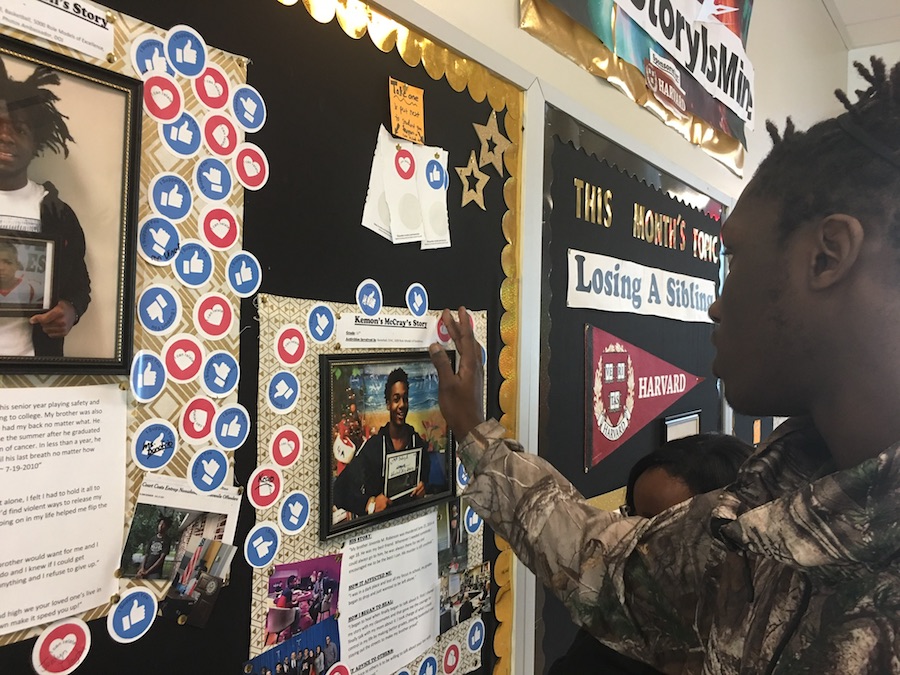
Next to the board they placed a box of post-it notes and their peers were encouraged to post if they too had faced that issue.
Posting, of course, required a fair bit of openness and vulnerability. But slowly, and then quickly, the post-its added up.
According to their teacher, the project – called #YourStoryIsMine – had a tremendous effect.
“Despite the animosity, the kids started being kind. They realized they could relate to each other.” (Ms. D)
Rewarding Courage
Today, June 1 2017, Billy, Chris and Nick are about to find out they’ve beat dozens of other entries to win the grand prize.
These brave students who decided to do something different and take real action for change, will each receive a monetary award, and the school will receive a donation from The KIND Foundation to sustain the project through the next academic year.
Their ideas will also be incorporated into a toolkit that will be distributed to teachers nationwide.
Kindness and change can thrive even in the most unlikely places if you have the courage to act.

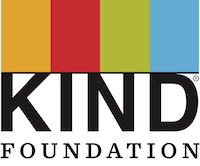
9 Business Model Examples for Social Enterprises
A business model is a structure, design or framework that a business follows to bring value to its customers and clients. However, there are at least three measures of the success of a business model—its ability to generate profit for its owners, its ability to generate positive change in the world, and its ability to achieve a balance of profit and positive change. The first approach applies to traditional for-profit companies; the second approach applies to traditional charities; and the third approach (a balance between profit and positive change) applies to social enterprises.
Given the definition above, a social business model is a structure, design or framework that a social business follows in order to bring about a positive change while maintaining healthy financial returns. Yet despite sharing this basic framework, social entrepreneurs have a wide spectrum of viable social business models to choose from.
To help shed light on that spectrum, in 2012 Wolfgang Grassi (aka W. Grassi) identified nine types of social business models. He began his analysis with three factors guiding any social business: the mission, the type of integration, and the target population. He then explored the way in which these three factors intersected with the three traditional categories of business (for-profit, not-for-profit and hybrids) to generate the nine specific types of social business models that any social enterprise could adopt.
Let’s have a look at them:
1. The Entrepreneur Support Model
This model of social enterprise (SE) sells business support services directly to the entrepreneurs in its target population. In other words, this type of SE helps entrepreneurs get their businesses off the ground. Support can come in the form of consulting services, training, microfinancing or technical support. Organizations that belong to this category may include economic development organizations, business development service organizations and microfinancers.
Examples to Inspire:
- Interview with Rick Alexander: Everything You Need to Know About Benefit Corporations and Legal Structures
- Interview with Kelly Campbell: How She Sold Her Second Company and Created a New Meaningful Business She Loves
- 10 Business Lessons from the Head of Legal Policy at B Lab
- Interview with Ryan Foland: How Mastering Communication Can Change Your Life
2. The Market Intermediary Model
This type of SE generally helps their clients by marketing or selling their clients’ products or services for them. For example, an organization that helps struggling small farmers by marketing and to sell their crops for them would belong to this category.
Want to dig in right now and figure out your impact model? We love this book: Business Model Generation: A Handbook for Visionaries, Game Changers, and Challengers which is a great tool, resource and guide to get you started!
3. The Employment Model
This type of SE provides their clients with job opportunities and job training. Revenue generated by those jobs pays for the SEs expenses and flows back into the services provided for those in need. Many youth and disabilities organizations adopt this model.
Examples to inspire you:
- Nasreen Sheikh: From Child Slave to Powerful Social Entrepreneur Helping Women Escape Poverty
- Sydney Sherman: How to Build an Online Marketplace that Combats Poverty Through the Things We Buy
- How These 4 Social Entrepreneurs Are Hacking Away at Poverty
- If You Like Flip Flops Than Here’s How You Can Change a Life Buying a Pair
- Top 7 Socially Aware Clothing Companies to Watch Out For
- Miscoots: How this Hip Clothing Brand is Disrupting Homelessness
4. The Fee-for-Service Model
The fee-for-service model is one of the most commonly adopted SE business models. The SE charges the customer directly for the socially beneficial services it provides. Many hospitals, schools, museums and membership organizations use the fee-for-service model to a greater or less degree.
Examples to Inspire You:
- University of the Future: The Sustainable Education Model
- 3 Social Entrepreneurs Blazing New Trails Toward Sustainability
5. The Low-income Client Model
SEs in this category generally offer social services directly (as in the fee-for-service model) while focusing on low-income clients. Hospitals and healthcare programs that offer their healthcare services to low-income patients often adopt this model.
6. The Cooperative Model
This is one of the most widely recognized categories of SE. The cooperative is generally a fee-based membership organization that provides member services to a group that shares a common need or goal. The cooperative is owned and operated by its members, who both run the cooperative and receive the benefits of its success. Two of the most well-known types of cooperative include credit unions and employee-owned businesses (“co-ops”).
7. The Market Linkage Model
SEs that serve as brokers for their clients often adopt this model. These SEs focus on building relationships and otherwise connecting their clients with markets for their clients’ products and services. However, unlike SEs adopting the market intermediary model, these SEs generally do not market or sell their clients’ products and services for them. Many trade associations adopt the market linkage model.
8. The Service Subsidization Model
This type of SE funds social programs by selling products or services in the marketplace. Service subsidization is one of the most common SE models, as almost any SE can adopt it. In contrast to organizational support SEs (see below), service subsidization SEs integrate their internal business with external social programs. For example, a law firm may use the revenue generated from the firm’s regular law practice to fund a social program that provides free law services to those in need. The firm may run the program out of their own offices and may provide the free law services themselves.
If you want an easy, scaled-down book to read, why not try Business Models for Dummies? It’s got a lot of info that is easy to digest! You might just want to spend a few afternoons getting into that one.
Examples to Inspire You:
- Blake Mycoskie Exclusive: The Brand that Launched a Thousand Impact Businesses
- Stand for Tomorrow: Inspiring Change Across Canada
- How this Winery is Reversing Climate Change While Growing the Bottom Line
- 7 Lessons Learned from Zero-Waste Fashion Entrepreneur Rachel Faller
- Opportunities for Climate Entrepreneurs and Impact Investors
- Christal Earle, Brave Soles: How Woman’s Mission to Save her Daughter Led to Upcycling and Ingenuity Breaking the Poverty Cycle
- Saving Women’s Lives: How Nomi Network is Taking on Modern-Day Slavery
- How this Backpack is Tackling Plastic Waste and Looking Super Fly Too!
- How this Hybrid Business Model is Tackling Food Security
- Meet Three of the Best Companies Upcycling and Reusing Waste for Social Good
- How this Perfume Company’s Impact Model Helps Women
- How Moeloco’s Social Good Impact Model Helps Children Get School Shoes
- Goodio Organic Chocolate: Good for Munchies and The World
- How to Support Conservation Efforts and Keep Your Feet Warm: Bartrams Socks Review
- How Envirofit Provides Cookstoves for People Around the World
- Interview with Jacquie Berglund: How this Hybrid Business Model is Turning Beer into Food
- How Catlin Powers uses Solar Cooking to Combat Deforestation and Indoor Air Pollution
- Recycling and Shoes? Two Businesses Driving Real Impact
9. The Organizational Support Model
This type of SE, like a service subsidization organization, sells products or services to fund social programs. However, the social programs they fund are part of a separate, parent organization. In other words, an organizational support SE raises funds for a parent non-profit that, in turn, runs the social programs the SE wishes to support.
Although most social enterprises may fall naturally into one of W. Grassi’s nine categories above, there is always room for new and combined models to emerge. If your social enterprise cannot achieve its goals through one of these business models, you may choose to explore entirely new ones.
Examples to Inspire You:
Ready to start planning your business?
Here are some great resources about the Business Model Canvas:
Business Model You: A One-Page Method For Reinventing Your Career
This is a great place to start building out your ideas. Business Model You is just that. Start with you, build a business model that aligns to your personal values. Starting with you, you’ll figure out where you want to go and how to have a lifestyle that lines up with your personal mission.
Here you’ll not only discover how to create your personal business model canvas, but you’ll also do the hard work of reinventing yourself — something we can totally get behind here at Change Creator!
The Lean Startup: How Today’s Entrepreneurs Use Continuous Innovation to Create Radically Successful Businesses
Eric Ries’ powerhouse book is a must for any entrepreneur that wants to start a business, not just a hobby. After reading this book, you’ll not only look at your business differently, you’ll have the insights and strategies to get there.
Anyone that wants to grow a business must first read The Lean Startup. That’s just a fact. If you haven’t gotten a hold of it yet, what have you been doing with your life? But seriously. You can find the latest edition here!
You might also enjoy:
- Top Markets with Big Opportunity for Social Entrepreneurs
- Looking to Nature and Tech to Solve Social Problems with Shel Horowitz
- 5 Simple Ways to Make More Impact Locally
- Keep Plastic Out of the Ocean And Your Pajamas: The Majamas Earth Review
- 5 Predictions: How Social Responsibility will Evolve
- What You Need to Know About Data for Bigger Social Impact
- Why Your Company Should Consider Becoming a 1% for the Planet Member
- The Environment: Innovative Solutions to Our Biggest Challenges
- The Role of Empathy in Social Enterprise: Why it’s Vital to your Success!
- How to Hack Systems for Environmental Change
- A Look at Climate Change and the Role of Social Entrepreneurs
- 15 Ways You Can Integrate Social Impact Into Your Life Now
- Top 10 Social Entrepreneurs Under 30 That You’ll Love Too!
- Mark Agnew: Challenging the Buy-One-Give-One Social Business Model!
- Earth-Friendly Trends to Shape the Face of the Fashion Industry
- What We Can Learn about Creativity from Non-Profit Organizations
How to Overcome Life Challenges and Pursue Your Mission
In this special interview we talk to Iffit Qureshi who was deeply impacted by the terrorist attacks that took place in Oslo, Norway, in addition to life events that would have caused most people to quit. Learn how she overcame her challenges and is now pursuing her mission in life.
Continue readingHow These 4 Social Entrepreneurs Are Hacking away at Poverty
Poverty in America and the world at large is pervasive, though few regard it as the most pressing social need of our time. Poverty seems to take a back seat to reducing taxes, increasing military power and revamping the healthcare plan.
Continue reading3 Social Entrepreneurs Blazing New Trails Toward Sustainability
As industrialized nations struggle to slow the process of environmental degradation and resource depletion, social enterprises are forging innovative new pathways toward sustainability.
Around the world, people are waking up to the fact that many of their current practices are unsustainable – damaging to both natural environments and indigenous cultures around the world.
We’ve seen fires, pollution, deforestation, and oil spills that have disrupted marine life and underwater ecosystems. But in light of these environmental disasters, hope and innovation are flourishing.
Findings from a market intelligence agency, Mintel, show several promising consumer trends taking shape. About half of consumers surveyed reported that they trust small companies to make good decisions, while 56% claimed to have stopped purchasing products from companies they deem unethical.
Despite the many hurdles social entrepreneurs must overcome, like acquiring funding and building community support, research suggests that it pays to be an ethical organization in the long run. Employee retention rates are easier to maintain, along with customer loyalty and vendor partnerships. Everyone, it seems, is more willing to hop on board with a company that sticks to its values. Some estimates even suggest that ethical businesses last longer and earn more over time.
Upon recognizing the dire need for values-driven business in today’s ecological climate, social entrepreneurs are building business models that benefit the environment rather than sacrificing it.
The following three social enterprises have conquered challenges, achieved astounding results, and transformed ineffective environmental practices around the globe.
One Acre Fund
- Organization: One Acre Fund
- Social Entrepreneur: Andrew Youn
- Focus Area: Environmental Sustainability, Poverty, Agriculture
- Regional Focus: Kenya, Rwanda, Burundi, Tanzania, Uganda, and Malawi
- Major Awards: Skoll Award, Schwab Foundation Social Entrepreneur Award
- Website:www.oneacrefund.org
What they do:
Since 2006, One Acre Fund has worked to empower African farmers to increase their harvests through a variety of educational initiatives. With the ultimate goal of eradicating poverty, One Acre is already supporting nearly a million farming families. Their data shows massive agricultural improvements of up to 99% in sustainability. They educate farmers on new planting methods, replace kerosene with solar lighting, and make tree germination more accessible. African farmers are taught about the importance of crop rotation and introduced to the process of composting. One Acre Fund’s four-step business model involves both financing and material distribution to ensure farmers get the most out of each harvest.
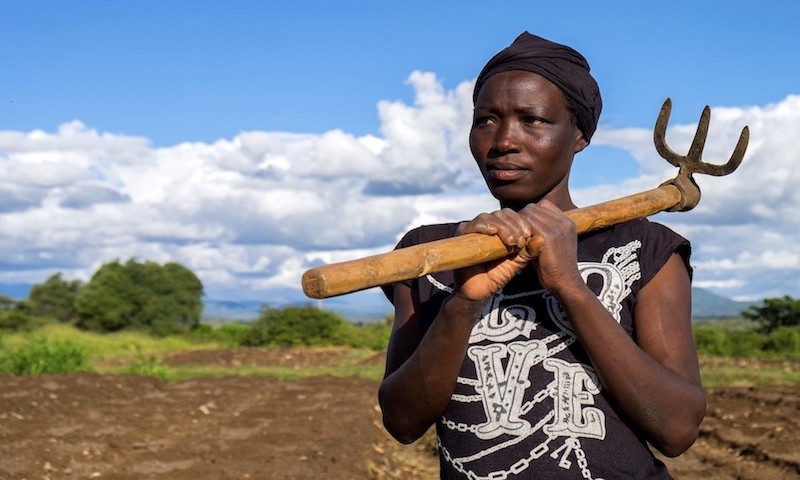
Why it’s important:
Among the poorest populations in the world, farming is the primary occupation. A variety of issues faces African farmers, including inflated fertilizer costs and limited access to desperately needed financing. Landlocked countries like the ones One Acre Fund work with often have a difficult time accessing materials. They travel to distant locations on poorly paved roads, ultimately driving up the costs of production.

Key strength:
Andrew Youn takes a concrete and practical approach to eliminating poverty. He believes it is not “geniuses” we need to solve these widespread problems, but simply more support workers to do the jobs they’re good at. His business model takes a ground-up approach and helps farmers from start (financing) to finish (market facilitation). In this way, One Acre Fund is incredibly unique. It doesn’t specialize in one area, but assists farmers in every way, from direct, hands-on education, to fertilizer distribution and profit maximization. The organization operates on the assumption that the answers already exist – all that is needed is to get your hands dirty and do the work. 2
Forest Trends
- Organization: Forest Trends
- Social Entrepreneur: Michael Jenkins
- Focus Area: Environmental Sustainability, deforestation
- Regional Focus: Worldwide
- Major Awards: Skoll Award, MacAurthur Foundation Award
- Website: www.forest-trends.org
What they do:
Forest Trends is an organization that has worked to preserve forests through innovative finance since 1998. They release transparent reports on ecosystem markets and collaborate through coalitions and partnerships to implement environmentally conscious practices. Forest Trends fosters a variety of initiatives, like the Katoomba Group, which aims to expand markets like watershed protection and carbon storage, and the Communities Initiative, which partners with Native communities to protect forests in Latin America.
One-third of the excess CO2 in the atmosphere since 1750 has come from deforestation
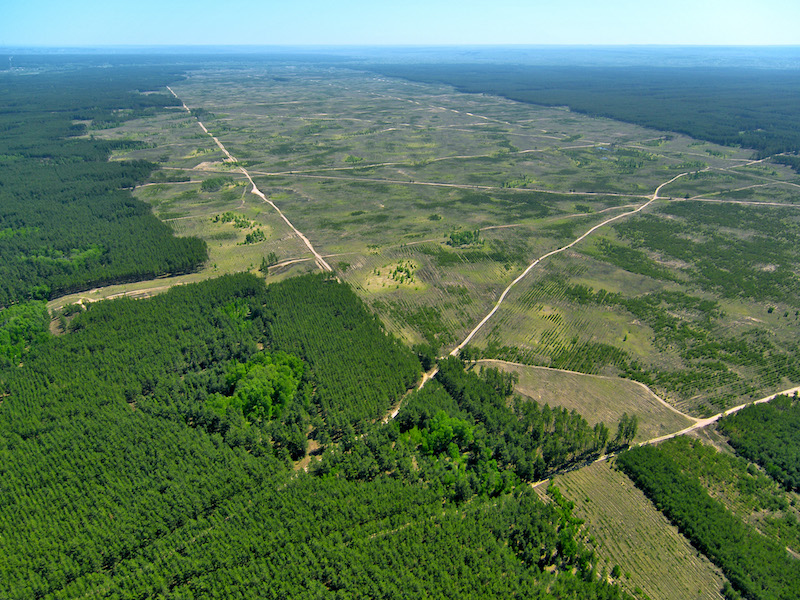
Why it’s important:
Deforestation has become a deeply concerning problem.
It’s estimated that 150 acres are destroyed every minute of the day, with more than 20% of the Amazon rainforest already lost.
As loggers systematically work their way through forests, animal and plant ecosystems are entirely disrupted, while indigenous tribes are often displaced.
Forest Trends has found that more than 90% of the world’s poorest populations depend on forests for cultural preservation and economic stability.

Key strength:
Founder Michael Jenkins cites his time at the MacArthur Foundation and his experiences around the world as crucial learning opportunities. As many successful entrepreneurs do, Jenkins began to recognize a specific gap in the NGO world – a lack of connectivity. Instead of starting yet another organization with separate and isolated objectives, he founded Forest Trends to initiate connections between various groups – some of whom previously perceived each other as opposing forces. Thus Forest Trends filled a market gap – one that desperately needed filling for the sake of environmental progress.
Triciclos
- Organization: Triciclos
- Social Entrepreneur: Gonzalo Munoz
- Focus Area: Environmental Sustainability, eliminating waste
- Regional Focus: Chile (but is expanding to other countries)
- Major Awards: BMW Foundation Responsible Leaders Awards, B Corp Best of the World
- Website: www.triciclos.net/es/
What they do:
Based on a strong belief in circular economies, Triciclos seeks to revolutionize recycling and eliminate waste entirely. They educate communities visually through beautiful recycling stations in South America. These large and colorful displays are hard to miss – they function as small waste-sorting facilities while simultaneously teaching citizens how to recycle different kinds of materials like paper and glass. Their software features a recyclability index and inventory system. Triciclos strives to transform consumer habits through education and direct community action.

Why it’s important:
Most people are still not educated on the rules and regulations that surround the recycling industry. We have single vs. dual stream recycling, yet many people are unaware which kind of service manages their neighborhood. In addition, there are numbers printed on materials that designate which kind of receptacle they should be placed in. We’ve seen cases of recycling fraud where materials don’t make it to the facility. And unfortunately, recycling bins are often contaminated with waste materials, causing everyone’s contributions to ending up in a landfill.
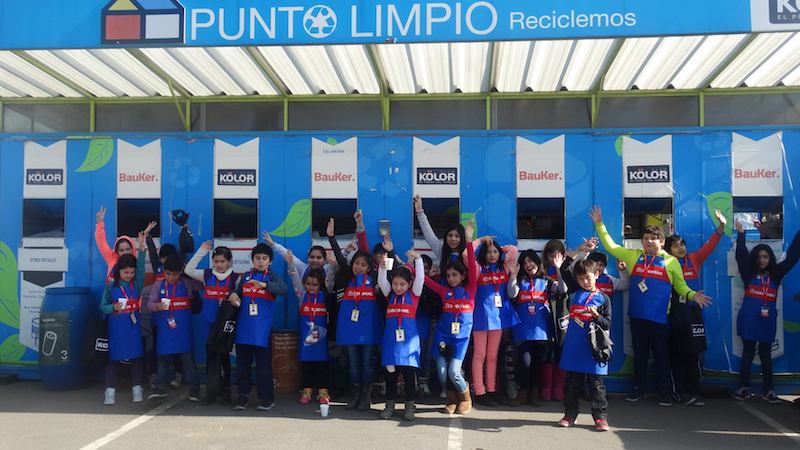
Key strength:
As the first B Corp certified in South America, Triciclos is paving the way for other social enterprises to follow suit. Founder, Gonzalo Muñoz has created a business model that sets the business apart from most other recycling initiatives in that it directly invests in people. Sanitation workers can operate a Triciclos recycling station as an entrepreneurial project. The organization also shares a third of its profits with all of its employees, who earn well over minimum wage. By investing in the community, Triciclos gives people a sense of ownership and a willingness to help the organization flourish.
Funding Your Social Enterprise: First Stop – Grants
There is an up side to the current funding rollback on various government agencies and programs: long-time donors will potentially find themselves motivated to increase their support for programs they want to continue, and new donors may consider stepping up.
Continue reading2 of the Top Markets with Big Opportunity for Social Entrepreneurs
Modern society faces numerous issues. From extreme poverty to worldwide hunger to planetary concerns that include pollution, climate change, diminishing natural resources and an ever-increasing list of endangered animal and plant species—there is no shortage in the challenges that face our world.
Nonprofit and government agencies have been the go-to in previous and present times of crisis. While social entrepreneur organizations can be nonprofit, they can also be for-profit and a hybrid between the two, and they are bringing government and businesses together to create change.
Social entrepreneurs are making their mark in addressing key issues and solving these in unique and individual ways by applying business practices to social problems. A prime example of this is Scott Harrison, founder of charity:water, a nonprofit that has raised more than $230 million and provides safe and potable drinking water in 24 countries.
In order to truly succeed as a social entrepreneur, it must be a cause that drives you forward through difficult and often overly-regulated, triple-copied bureaucracies that can make change daunting. The following represent two of the opportunities ripe with need. Find the one that stirs your soul and lead the way.
The Sun
The International Energy Agency (IEA) believes that “Without decisive action, energy-related greenhouse-gas emissions will lead to considerable climate degradation with an average 6C degrees global warming.”
Renewable energy is one of the answers to this worldwide concern and solar energy is leading the way. According to the IEA, “The U.S. could install 305 gigawatts of solar by 2030 and 737 gigawatts by 2050.” Those numbers represent an increase of approximately 1000 percent from today’s current capacity. Just 16 years ago, 1,000 solar power installations could be found on America’s rooftops.
Today that number is close to one million. In addition, the cost of installation is half of what it was just six years ago. The technological advances that have lowered installation costs have also increased availability worldwide. According to Think Progress, “Over the past four decades, for every doubling in scale of the solar industry, the price of solar modules worldwide has dropped roughly 26 percent.” Nationally and globally, installation of clean energy is exploding.
Solution
Approximately 1.3 billion people live without access to a power grid around the world. Enter the social entrepreneur who can often overcome potential government hold-ups. Bringing affordable renewable energy to rural communities provides light and power for schools, homes, businesses and farms. Consider SunCulture—an innovative sustainable energy company that created an “AgroSolar Irrigation Kit.” This solar-powered drip irrigation system waters crops by pulling water from available sources. SunFunder finds investors for individual solar projects. Their goal is to finance $1 billion for solar loans by 2020.
Food
If you live in the United States, you probably see food waste every day. The statistics, in a world where more than 700 million people suffer from hunger, are truly daunting. According to The Guardian, our need for perfect, unblemished fruits and vegetables is the root cause of the current trend of throwing out anything less than perfect and this occurs at the level of farmers, packers and distributors. Approximately 60 million metric tons of produce worth about $160 billion is thrown out every year by retailers and consumers. When you add the food left in the fields or in the warehouses due to their imperfections, it is estimated that almost half of all produce grown goes to waste. And that’s just in America. Globally, approximately 1.6 billion metric tons of produce at a value of $1 trillion is wasted every year.
Food waste in developing countries is largely due to poor equipment or lack of transportation. In wealthy countries it is largely due to the high aesthetic standards. If the hunger crisis facing the world calls to your inner social entrepreneur, consider how the countries below have made a difference.
Solutions
The Danish city of Horsens calls the food waste outlets pop-up shops. They collect food from supermarkets that may be nearing its best-before-date or has damaged packaging and then sells it at discounted prices to those in need. Denmark is making a concerted effort in the battle against waste and has cut it by a quarter since 2010. The UK calls these same types of shops social supermarket chains. Company Shop was founded more than 40 years ago and is UK’s largest redistributor of surplus products. They stop 30,000 metric tons of food from going to waste by redistributing it to communities in need and offering the food at discounted prices.
Power and food—two of our most vital needs as a people and yet many around the world are without. If social entrepreneurs have their way, there will come a day when everyone will have ample food and a light to lead the way.
At Change Creator, we inspire and empower people to earn a meaningful living that positively impacts the world.
Approximately 60 million metric tons of produce worth about $160 billion is thrown out every year by retailers and consumers.
How H2GO is Reducing The Cost of Renewable Energy for Millions of People
Exclusive interview with social entrepreneur, Dr. Enass Abo-Hamed, founder of H2GO.
Subscribe to this show on iTunes | Stitcher | Soundcloud
Enass Abo-Hamed is a PhD in chemistry who was working on a project storing hydrogen gas, developed an invention, and was unsure what she should do with it.
But what was it? In the lab she created a smart sponge material that absorbs hydrogen gas and only releases the gas when you turn it on. It can be turned on and off. The only byproduct is water vapor with zero carbon emissions.
At Cambridge she was able to test the commercial potential of her invention through their programs.
H2GO Power is an award winning spin-out company from the University of Cambridge developing safe and low-cost hydrogen production and storage technologies.
Their mission is to bring affordable reliable energy to millions of people around the world in a sustainable way for large social and environmental impact.
Enass loves to solve technical problems and work on solving big challenges. Energy was a passion for her because it’s such a big global problem that impacts everyone. It’s number 7 on the list of sustainable development goals. She believes it should be number one.
“We have about 1.2 billion people around the world that don’t have access to electricity”
Topics of discussion in this interview
- How Enass validated her idea, what was that process?
- How will they get water in the local areas where energy is required?
- Will this be cheaper for people in local areas and how will it work?
- How did Enass prove there was a market opportunity to earn money?
- What was her biggest challenge moving from the chemist mindset to the business mindset?
- How did she get funding?
- Where will this technology first be tested and why?
- Why the term “hydrogen” became a challenge in the minds of people who would benefit from this product?
- What are the needs of the people who need cleaner safe energy and what are they doing now for energy?
- What was one of the most shocking learnings Enass had about people who need this type of solution?
- The vision of H2Go and what we should expect.
- What are some of the possible applications for this type of technology?
5 Expert Strategies on Overcoming Your Fears
If you’ve ever thought about changing careers, or asking your boss for a promotion, or maybe starting your own business, but you thought, “Why take a risk? I might not be completely satisfied with what I have now, but at least it’s safe, and I get a steady paycheck,” maybe it’s time to think again. It might be true that you’re choosing caution over risk, but you have to consider that what’s really holding you back is fear.
Everyone Contends with Fear
The first thing you should know is that you’re not alone. Most people experience fear at one point or another in their careers. They fear failure, or losing money, or perhaps looking foolish. Those are not unreasonable concerns, but letting them prevent you from following your dreams isn’t without its own risks. You might, for example, be nagged for years by the feeling that you lost a golden opportunity. The truth is, what most people regret as their near the end of their careers is not their failures, but their inaction.
It’s OK to Be Afraid
Fear is normal—it’s part of our genetic makeup, a survival instinct that prevents us from unwittingly entering potentially hazardous situations. What’s not OK is being so overwhelmed with fear that you shy away from a potentially better life.
Patricia DiVecchio is a business and work coach who helps her clients overcome their fears and realize their ambitions. The author of Evolutionary Work: Unleashing Your Potential in Extraordinary Times (Pearhouse Press), and president of International Purpose, DiVecchio has been helping people for more than 25 years manage fear and uncover their work potential and purpose.
Her advice to her clients? Instead of running from your fears, embrace them and treat them as an ally. As she told Forbes recently:
“(Fear) can be a great motivator, a great teacher. We don’t see it like that. We tend to run away from fear, back, or shy away from it, instead of stepping into it. You need to recognize it as something you can learn from. You need to shake hands with your fear and enlist it as a friend- a force to encourage forward movement, rather than something to hide from.”
Here are 5 primary strategies she recommends to embrace your fear and use it to motivate positive action:
1. Make It Concrete
One of the ways fear paralyzes us is through its lack of form. Fear is nebulous, and for this reason difficult to get a hold of and overcome. DiVecchio puts her clients through an exercise in which they draw a picture of what their fear looks like. One of her clients, for example, drew himself afraid as a rickety old car on a road filled with potholes. In making his fear tangible, he was able to grasp its power over him and conquer it.
2. Give Your Fear a Voice
DiVecchio recommends keeping a journal in which you articulate your fear, and monitor how it changes over time. You can’t change what you don’t acknowledge—a journal forces you to confess your fears to yourself, and, in so doing, learn from them.
For example, if you have the desire to begin investing in the stock market, but are afraid you’ll lose the money you invest, writing about that fear might help you make more reasoned investments, or seek the advice of a competent broker. You’ll also be able to examine “the worst that could happen,” and realize that even that worst-case scenario would not be the end of the world.
3. Take Small Steps
Fear often has the power to paralyze us and lead us to complete inaction. To pull yourself out of this trap, do one small thing each day that you’re afraid to do. For example, if you are considering leaving your 9-to-5 job to start your own business, you could begin by doing a little research each day, or calling a trusted mentor for advice. Each small step you take will give you a sense of accomplishment and convince you that you can take another step, and another after that.
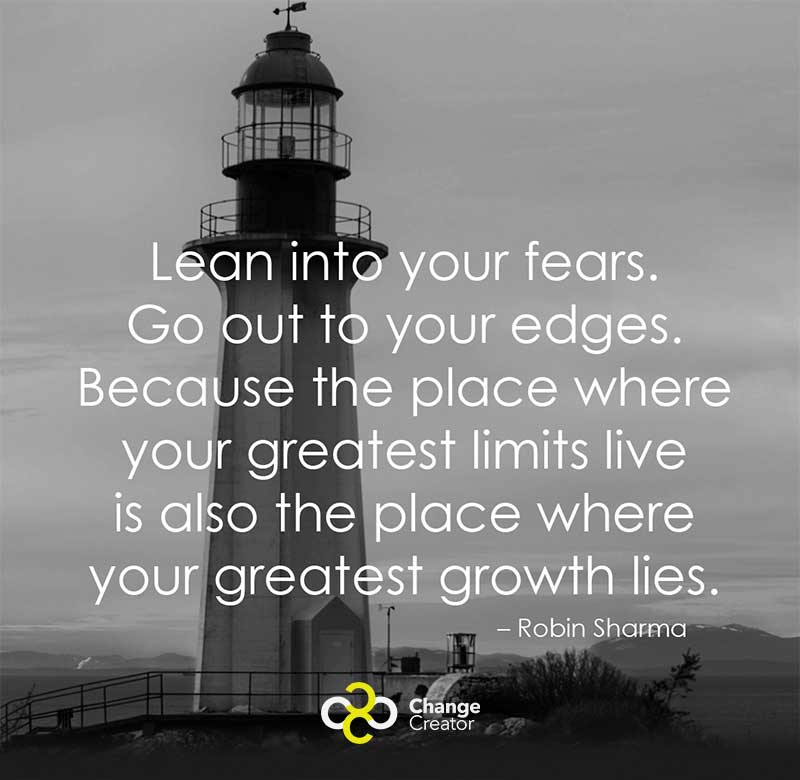
4. Practice “the Three E’s”
When we’re afraid, we become convinced that we’re not especially good at anything. This, of course, is not true—everyone has innate skills and capabilities—those things which are not the result of education or experience, but inherent—and everyone needs to remind himself of what those talents are. DiVecchio tells her clients to write about the three E’s: the things that come to you easily, effortlessly, and are exciting, and then to act upon them confidently, perhaps to launch a new career that otherwise might not have occurred to you.
5. Reach out to Trusted Friends and Family
Many people have no clue about where their talents lie. Take the time to interview several people who know you and whose opinions you value. Ask them what they think you’re better at than just about anyone else.
You’ll be surprised to see patterns emerge, similarities in their responses which will help you identify your strengths and act with confidence upon them. It’s sometimes said, “if 5 people tell you you’re sick, see a doctor.” By the same token, if 5 people you trust tell you you’re an outstanding writer, or the first person they come to for advice, believe them.
Final Words
Success can be as scary as failure—it often brings added responsibilities, and the need to maintain that success over time. It means the kind of change and transformation that you might be afraid to embrace. The good news is that there are competent professionals who are skilled at inspiring and empowering their clients to earn a meaningful living that positively impacts the world.
What have been your greatest challenges with fear and how did you overcome them? Share in the comments because we’d love to hear from you.
Related:
Why Social Entrepreneurship is Picking Up Steam
A deep dive about the conditions today that are inspiring the recent transition towards social entrepreneurship and how it will impact employers.
Continue readingWhat it Takes to Build a Globally Recognized Media Platform
Inc 500 Entrepreneur and founder of Influencive.com, Brian D. Evans, shares his powerful strategies for building a personal brand and scaling up your blog or media platform.
Continue readingAdam G. Force Talks Shop with Joel Brown about Building an Impact Business
Exclusive interview with Change Creator Founder, Adam G. Force.
He’s interviewed many of the world’s best such as Grant Cardone and Tony Robbins and is doing amazing work today.
We discuss what it takes to build a world-class brand that drives real impact in the world.
I interviewed Joel in 2016 and he was on the cover Change Creator Magazine issue 3.
In this interview Joel and I dive into a range of topics, including:
- What is the current shift taking place in mindset today?
- Why Change Creator was created?
- What is the difference between social entrepreneurship and economic entrepreneurship?
- What was a big takeaway from my interview with Arianna Huffington?
- What was my biggest breakthrough or lesson in putting the magazine together?
- What are 2 key paths to marketing essential to understand?
- How I connected with major influencers like Arianna and Tony and what took to succeed.
- How to select the right influencers.
- Advice to running a side-hustle and when you can leave your job to go full time.
- Why you have to be willing to invest in yourself and business.
- What it means to stack success and how I did that with the magazine.
- Why travel is so important to empower yourself.
- What does it take to find your mission?
- What is self-inventory?
I hope you find this helpful and inspiring!
“The world is whatever we decide it to be and we need to look at ourselves first and foremost to change anything around us”.
Secrets to Building an Audience For Your Social Enterprise
Yanik Silver shares his secrets to sales, marketing and mission. What does it take to succeed with your startup and drive impact?
Continue readingHow Millennial Women Are Securing a Path To Discovery and Solidity
Millennial women are a rising force to be reckon with. In this article we explore why that is and their culture so you understand what this $18 trillion dollar market of girl power is about.
Continue readingInfographic: 5 Priceless Lessons For Success in Life & Business
It was truly an honor to have the opportunity to interview Tony Robbins and have him on the front cover of issue #8. His story is moving and his experience is absolutely priceless.
Continue readingWhy You Aren’t Growing Your Business and What To Do About It
Mike Paton is the author of the book, Get a Grip, where he talk about how leaders learned to develop and commit to a clear vision, establish focus, build discipline, and create a healthier and more cohesive team.
Continue readingWomen Leading Social Change: 5 of the World’s Best Female Social Entrepreneurs
This has been recognized by many of the world’s leading thinkers and doers including the Dalai Lama, who said:
“According to scientists, women have more sensitivity than men. Sometimes I really feel that more women should take responsibility in the leadership of our planet. It would mean less violence.”
Beyond the numbers, beyond UN statistics, there are thousands of leading female social innovators who are reinventing how to address pressing issues and effecting change on a regional and global scale.
Having women social entrepreneurs is good for any number of reasons (for the most cut and dried, go back to those UN statistics). But one reason that’s often left out is that women, especially at the grassroots level, have the perspectives and ingenuity to effect change benefiting other women and society more broadly in a very efficient way.
It’s women, for instance, who often understand the barriers to accessing the resources for change. It’s women who understand that programs after working hours often don’t work for women because, in most traditional countries, they’re expected to care for children or cook. Women, more than men, better understand the challenges their children face when it comes to accessing education, finding employment, and getting health care. These are the perspectives that women bring to social innovation that make their participation so significant.
With this in mind, here are five of the world’s leading female social entrepreneurs. They’re spread out all over the globe, with women working in diverse areas with diverse people. Some of them you may have heard of, others probably not.
Remember, if one organization speaks to you, don’t hesitate to reach out and get involved. These organizations are often hiring and are always taking volunteers. Don’t be afraid to venture out and get involved, even if the organization is far away from your home.
ONE
- Organization: Afghan Institute of Learning
- Social Entrepreneur: Sakena Yacoobi
- Focus Area: Early Childhood to Primary Education, Women’s and Girls’ Education
- Regional Focus: Central and Southern Asia
- Major Awards: Skoll Award, Ashoka Fellowship, Opus Prize, Schwab Social Entrepreneur
- Website: http://www.afghaninstituteoflearning.org
What they do:
Over the last twenty years, the rights of women, access to education, and the availability of healthcare and health information have floundered in Afghanistan. Simply attending school or getting a book was almost impossible under Taliban rule, especially for women. Today, the Afghan Institute of Learning (AIL) is working to rebuild an education system across the country by training teachers (21k to date), health staff (10k to date), and operating a hospital which sees 2000 patients per month.
Why it’s important:
AIL is spreading education and health information across a country that, after nearly three decades of war, has a vacuum. The teachers AIL trains, the nurses they inform, and most importantly, the boys and girls they teach will go forth in their country with the skills and knowledge to rebuild Afghanistan and bring prosperity to the country.
TWO
- Organization: Breakthrough
- Social Entrepreneur: Mallika Dutt
- Focus Area: Human Rights
- Regional Focus: Central and Southern Asia, North America
- Major Awards: Lipman Family Prize, Skoll Award
- Website: http://us.breakthrough.tv
What they do:
With its mission of making violence against women and girls unacceptable, Breakthrough uses media arts, and technology to change norms. Through classroom modules, leadership development, educational entertainment such as interactive theater, video vans, call-in radio shows, online games, and mass media public service advertising, Breakthrough is training people from all backgrounds and changing societal norms to make the world less violent toward women.
Why it’s important:
Breakthrough is truly reaching a large audience in India and the US. Since their founding, their campaigns have reached millions of viewers and over 500,000 people have participated in their training sessions. What’s more, their work with lowering the prevalence of child marriage has resulted in an increase of nearly a year in the marriage age for girls in villages where the program operates.
How to Use Pop Culture to Tackle Human Rights Issues
Change Creator exclusive interview with Malika Dutt
Mallika Dutt & Sonali Khan of Breakthrough Accept the 2016 Skoll Award
THREE
- Organization: 96 NISAA FM
- Social Entrepreneur: Maysoun Odeh Gangat
- Focus Area: Civic Engagement
- Regional Focus: Palestinian Territory, greater Middle East
- Major Awards: Ashoka Fellowship, Synergos Fellowship, CGI Fellowship, Schwab Fellowship
- Website: http://www.radionisaa.net/
What they do:
96 NISAA FM is the first commercial, Arabic language, women-focused radio station and website in the Levant. 96 NISAA FM, meaning women, uses the airwaves to empower women through the use of media and through providing a platform for everyone to come and discuss women’s issues.
Why it’s important:
96 NISAA FM uses a unique and new approach to addressing women’s issues in the Arab World. Through media, it transforms how women see themselves and how they are perceived and seen in regional and global media outlets. 96 NISAA FM is also used to present women with positive role models, give them information on professional growth and development, and encourage more of them to enter the global media stage.
FOUR
- Organization: Roots of Peace
- Social Entrepreneur: Heidi Kuhn
- Focus Area: Peace, Human Rights
- Regional Focus: Central, Southern, and Southeast Asia; Europe; Middle East; Africa
- Major Awards: Rotary International “Service Above Self” Award, “Walk the Talk” Award from UN World Environment Day, Skoll Award
- Website: http://www.rootsofpeace.org
What they do:
Roots of Peace aims to revitalize war-torn parts of the world. They do this in several ways from the most fundamental, like removing landmines, to the more nuanced, like restoring farmlands so that people can work and earn a living.
Why it’s important:
Roots of Peace (ROP) works all over the world removing landmines and other remnants of war so that land can be cultivated again and people can go back to productive work. From 2004 – 2014 alone, ROP helped to put one million farmers back to work and created tens of thousands of jobs in Europe, the Middle East, Africa, and Asia.
FIVE
- Organization: Saúde Criança
- Social Entrepreneur:Vera Cordeiro
- Focus Area: Economic Opportunity, Education, Health
- Regional Focus: South America
- Major Awards: Ashoka Changemakers: Innovations for Health, Top 500 NGOs, Skoll Award
- Website: http://www.saudecrianca.org.br/en
What they do:
Saúde Criança is an organization that, with its pioneering methodology, helps children who require hospital care and live below the poverty line and pushes families toward economic and social self-sufficiency. Among other things, Saúde Criança offers vocational training to families, provides housing and housing improvement, and runs programs for pregnant women and adolescents.
Why it’s important:
Saúde Criança uses a groundbreaking approach to social change which has been studied and shown to work by studies at Georgetown University. Because of its success, the methodology has been replicated at 23 institutions in 6 Brazilian states, which has helped more than 50 thousand people across the country. The methodology has even been incorporated in several hospitals in Rio de Janeiro and Belo Horizonte.
Reinvent Yourself: Experience Life Like Never Before [Free Download]
If you’re ready for a higher quality of life, download “Reinvent Yourself” to explore expert insights that show you exactly what it takes to get there.
Continue readingUsing Innovative Gaming to Protect Wildlife
For many years now wildlife has been under attack and extinction rates are higher than ever before. Today, social entrepreneurs like Gautam Shah and Anne Miltenburg are using innovation to help push conservation of these important creatures.
Continue readingA Look at Climate Change and the Role of Social Entrepreneurs
The topic of climate change isn’t always easy to discuss, but the subject has become unavoidable. Sea levels have continued to rise annually by 0.14 inches since 1992. Glaciers and ice caps are melting at an alarming rate.
Continue reading




